Home: Jazz Chords for Baritione Ukulele
The fully diminished chord has some interesting properties. It is formed with a one-step move from the Xm7(b5) chords. The b7 is flatted again, and, yes, that is a 6, but its role is of a double flatted 7 so that is how it is notated, bb7. Here are the chords.
Notice that they are all played exactly the same way. But the roles of the notes change based on which is the root.
Why are they all the same? The intervals in a diminished seventh chord are all minor thirds (m3).
1 (m3) b3 (m3) b5 (m3) bb7 (m3) 1
Which means that the intervals between the 1 and b5, and b3 and bb7 are augmented fourths (4+). And those pairs link across the middle two strings as a minor third (m3), which gives the zig-zag pattern seen in all the chords.
Notice how much easier the chord search game is with diminished sevenths. It’s just zig-zags all the way up the neck.

This repeating pattern provides a powerful tool for figuring out any of the key seventh chords on the fly, without having to look at diagrams.
- Find the root note, (1), on the fret board.
- Make the zig-zag pattern.
- Note the b5 is next to the (1) and the other two strings have the b3 bb7 pair.
- Add the tones required, maybe the b5 -> 5, the b3 -> 3, the bb7 -> b7 -> 7
Here is the full miracle:
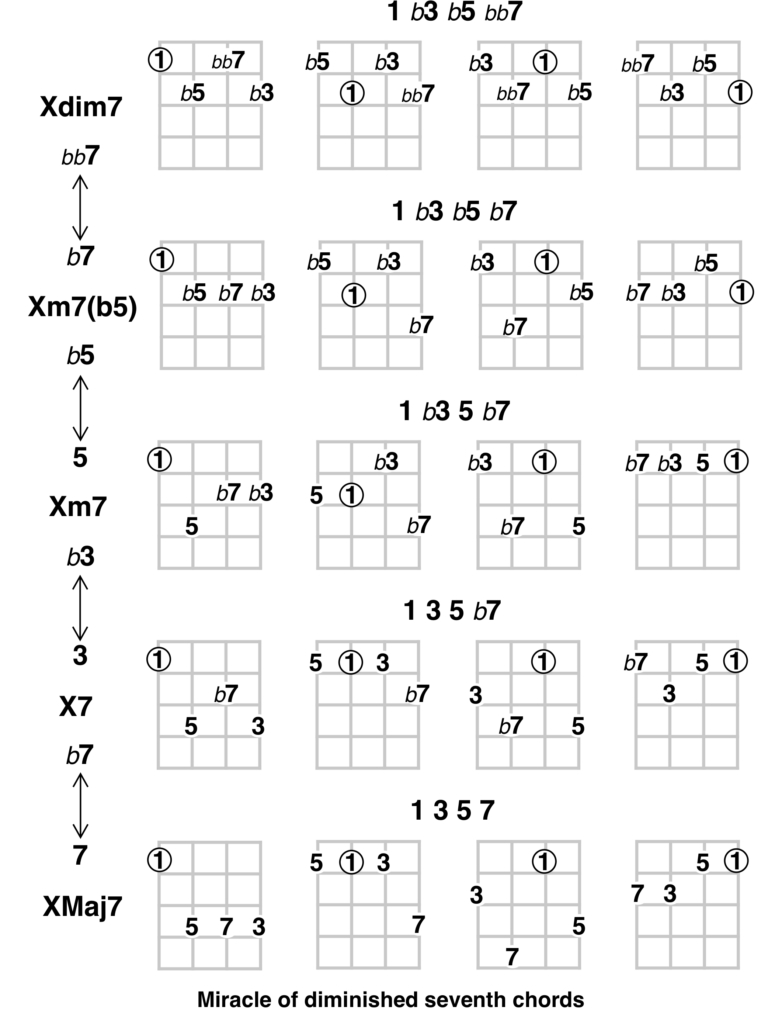
Example – F#m7
Suppose you needed to play an F#m7 somewhere near the nut. Using the miracle you can easily create it on the fly.
Step 1— Find possible roots. There are two F#s below the 5th fret, one on the 4th fret of the D string, and the other on the 2nd fret of the E string.
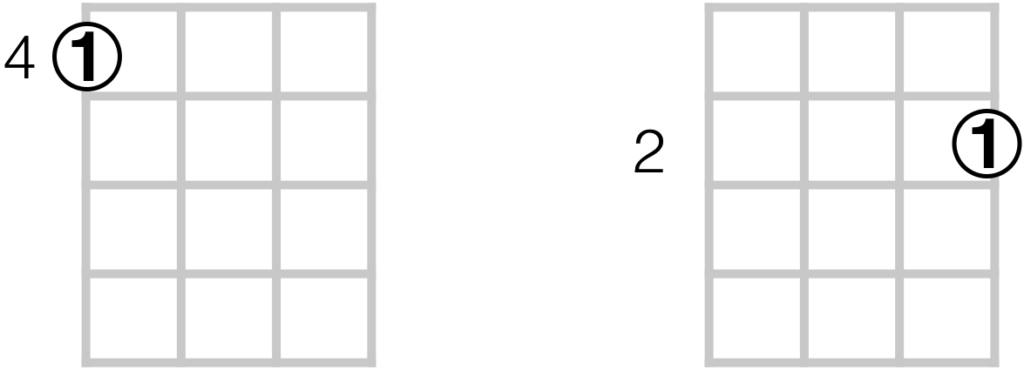
Step 2 — Add the zigs connecting the (1) and b5 of the diminished chord.
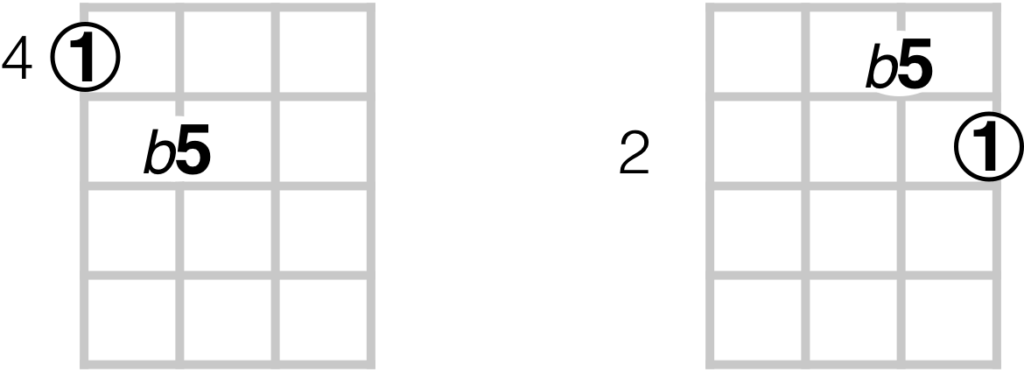
Step 3 — Find the minor third zag across the middle strings.
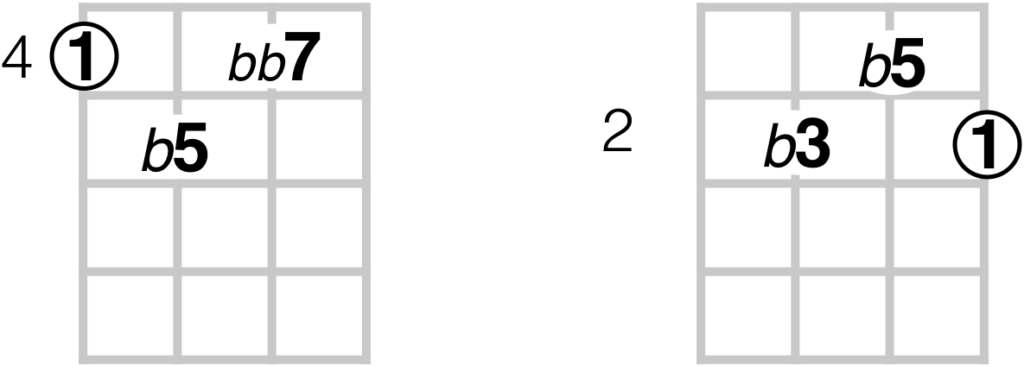
Step 4 — Add the last zig missing note to finish the diminished chord.
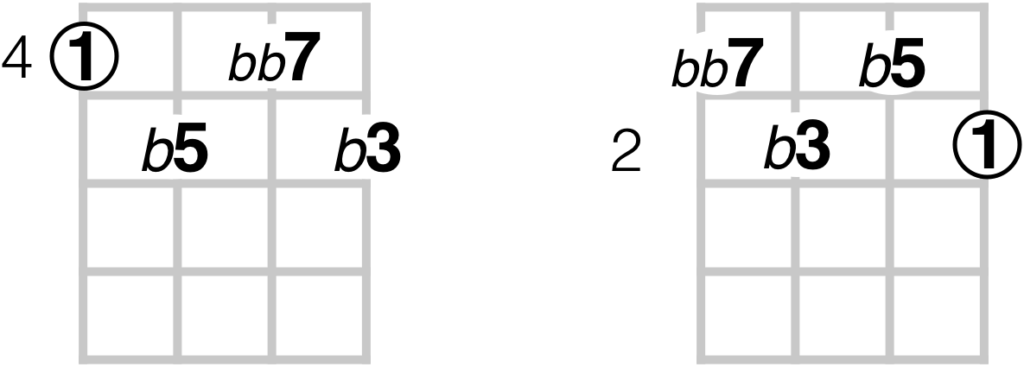
Step 5 — Move the bb7 up a fret to a b7, as in a minor 7th chord.
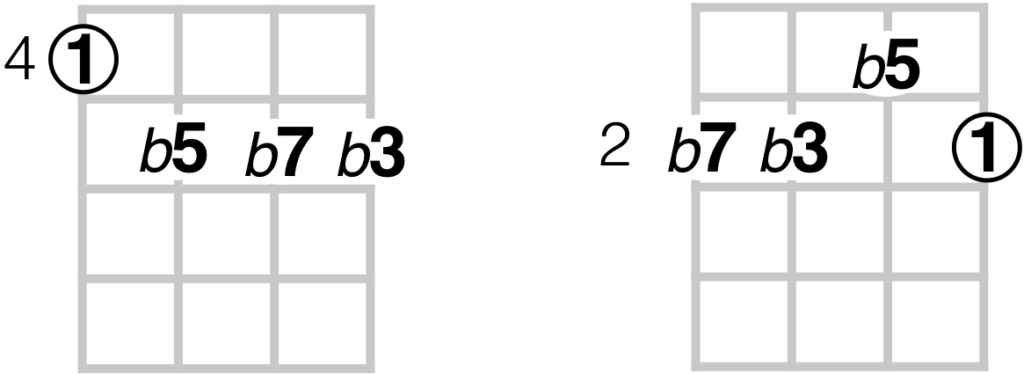
Step 6 — Move the b5 up a fret to a 5, as in a minor 7th chord, and voila! Two ways to play F#m7 below the 5th fret.
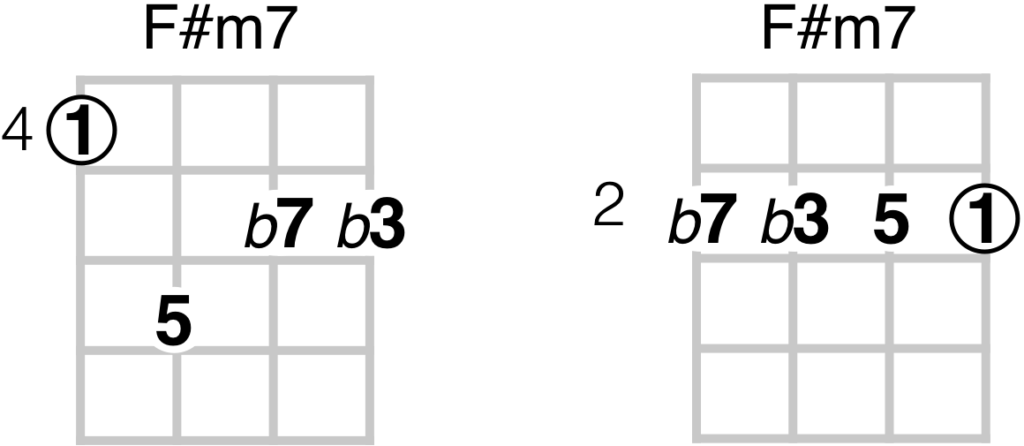
These steps can be used to derive, on the fly, any of the 7ths chords covered so far.
Creating Suspense
A curious fact is that, for any given Xdim7, once found, it can be moved up three frets and still be the same chord.
For example, Cdim7 can be played at the 1st fret, and at the 4th, 7th, and 10th frets.

If you play the chord at the first fret, and then strum it on the second, third, and then fourth frets, you’ll hear a suspenseful build up followed by a resolution. If you heard this in a movie sound track you would know something was about to happen.
This is another example of chord homonyms sounding like they should in context. Playing the shape at the fourth fret is also F#dim7, D#dim7, and Adim7, but played as recommended above, it clearly sounds as Cdim7.
So why does this shape keep coming back to the root every three frets? Each note is increased by a third, which keeps it still in a diminished 7th chord, but on a different string. Still, doesn’t it seem a bit strange it should work like this?

